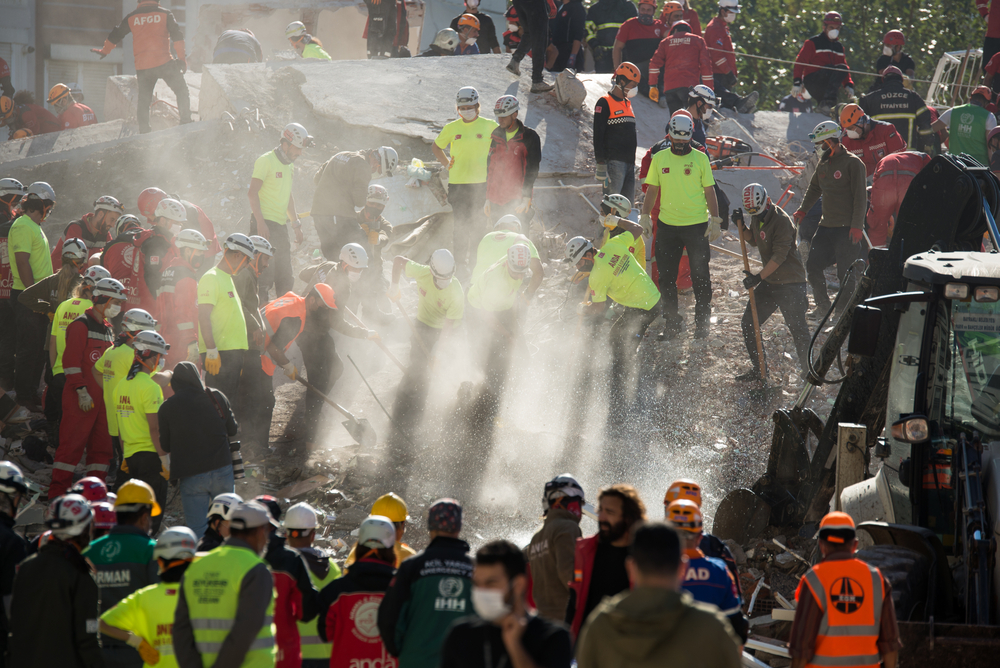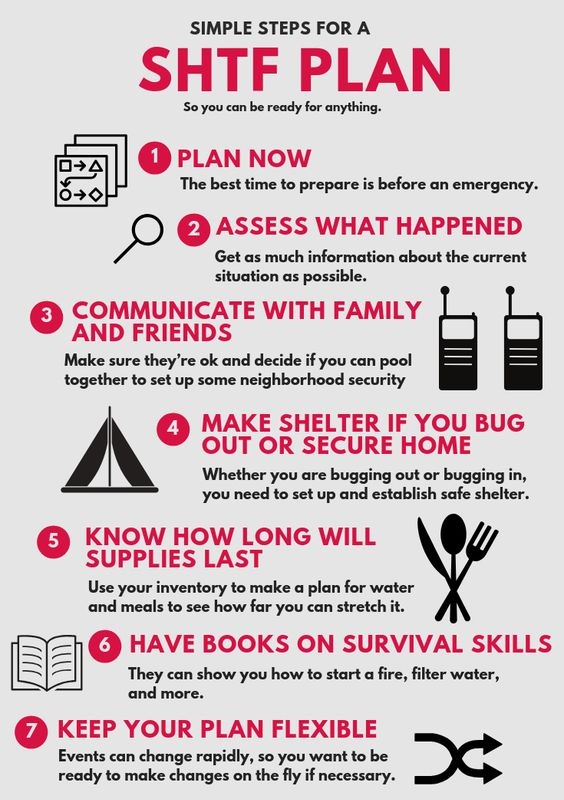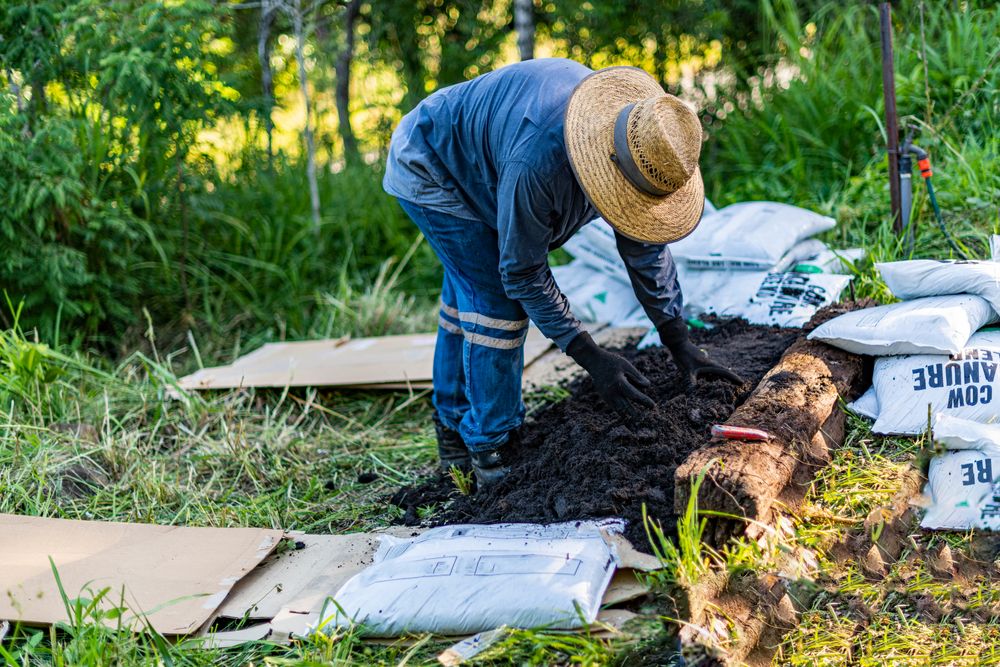The concept of building a survival team has won a lot of credibility in the prepping world.
The idea of gathering together a group of like-minded people to ensure your mutual survival makes sense. Having different group members who work to become experts on other areas on behalf of the group has benefits. But none of this means it’s going to work in real life, and that’s the actual test of any concept.
Besides personal survival scenarios such as being lost in the woods, we can break down all survival scenarios into short-term survival and long-term survival scenarios.
Short-term ones are mostly natural disasters, with the aftermath being harder to survive than the disaster itself.
Long-term ones are generally the TEOTWAWKI events that we all love to talk about. There’s a good reason why we put so much emphasis on TEOTWAWKI events in the survival community. That’s because they are an excellent framework for developing our survival plans. If the primary disaster you’re prepping for is an attack against our country by EMP, you’ll be ready to deal with a hurricane as well. But the reverse isn’t true; preparing for a hurricane won’t give you an extensive enough stockpile to survive an EMP.
It’s unlikely that a survival team will be necessary for those short-term survival situations. While there may be a few things that team members do to help each other out, our survival won’t depend on the team. Even the unprepared will most likely survive, although not with as much comfort as we do.
But then, those teams aren’t designed for short-term survival situations. Few of the skills they concentrate on, like hydroponics, can be implemented in that short a time; and even if they were, they wouldn’t come to fruition. No, those teams exist so that when the big one happens, we’ve got some people to work together with so that we can all help each other survive.
It sounds like a great concept, but is it? Will it work in a real TEOTWAWKI event?
The Big Problem – Location, Location, Location
I’ve seen many survival teams through the years and have acted as a consultant to some of them. Yet, I’ll have to say, few of those teams will be able to function in a post-disaster world. There are several reasons for this, but the biggest one is that they are scattered all across town. How do they expect to help each other in the wake of a grid-down situation where they can’t get gas for their vehicles if they aren’t within walking distance of each other?
Having a joint location where the group can gather during a crisis has to be the top priority for any survival team. Otherwise, there’s no way that the team can come together and support each other. Few teams have this ability, but allow me to share a few examples that I know.
The Family Home
Before my kids grew up and moved out of town, our survival retreat was the family home. Even though I was an “empty nester,” I didn’t bother to downsize, as many people do. Instead, I kept the large home with the intent that my kids and their spouses could return if necessary. They were my survival team.
Of course, this is slightly different from what most people do, as they weren’t all preparing. Instead, they were counting on my preparing for them as well. But that was OK, as it fits right in with what I was doing. We had enough food in that house to feed everyone for nine months and we were working on bringing it up to a year. On top of that, I had an extensive vegetable garden and worked on other food-related projects, like chickens and a fish pond.
While my kids weren’t trained to take over one area of our team’s survival, they all had basic survival skills that I had taught them growing up. Also, both of my sons-in-law were outdoorsmen, skilled in hunting and fishing. Everyone would be pitching in and learning as they went.
One Family Has Property
While living in the same area, I was invited to become part of another survival team. The family who owned our local shooting range had a sizeable “rancho” outside of town. They were checking out the regulars at the range and asking some of us to join in with them, moving onto their property, should the brown stuff ever hit the rotary air movement device.
That was organized considerably different than most survival teams that I know, in that there weren’t subject area experts for each area of survival, the way most teams are organized. Instead, they sought out knowledgeable people and who had skills that would be useful to the group. In my case, they wanted me for my survival skills, but they also wanted me as a shooter. Their number one criteria was forming an excellent defensive team.
As part of this, we were invited to build a shelter or park a camper on their property, which would give us someplace to live on their property. It was an informal arrangement, but one that would make it possible for us to work together.
They buy Homes Nearby Each Other
Another group that I knew and worked with essentially bought out a neighborhood. When the development was opened, they all bought adjoining properties and built their homes in the same area. While there weren’t enough of them to buy out the whole development, they own a good corner of it, making working together easier.
That is a tricky one to work out, simply because it requires finding someplace where all the team members can buy a property. But that doesn’t make it impossible. Instead, it means taking the time to find something which will work for everyone.
One key to this is looking for land on the fringes of town or slightly outside of town. That’s usually where the new developments are being built, so it’s easier to find many lots close together, all of which can be bought. Trying to do this in town is usually much harder. But then, living on the fringes has other advantages as well.
Another key is to be willing to help each other out. It’s rare to find a survival team where everyone makes roughly the same amount of money unless that becomes a criterion for inviting new members. So there might be some strain between members, as one family who has money wants to buy or build a much too expensive property for the rest of the team. It may be necessary for the family who is well off to help out other team members, at least to get started.
They Buy Property Together
Finally, the fourth example I want to mention is a group I know up in Canada. This is the only group that I’ve ever met personally, which set out to buy a tract of land out in the wilderness to build a joint survival retreat. They got it right.
We all aspire to that proverbial cabin in the woods for our survival retreat, but few of us can afford to do it. But this group did mostly be bringing their resources together. While none of them could individually afford to buy a good tract of woodlands, together they could. Not only that, but they were able to buy a relatively sizeable lot of land, ensuring their privacy.
The idea was that each of them would build their own shelter in the center part of the land, essentially making a small village. Most were building their own, taking the time to do it right. None of the shelters looked the same or were even built the same way, but they worked together. Once they finished with that, their plan was to areas for farming and other survival tasks, allowing the individuals in charge of those areas to use the space available to them.
This group was doing much like the people who settled this country and expanded the frontier westwards if you think about it. There was no “master plan” for settling the United States or Canada. Instead, small groups worked together to establish towns and homesteads where they could. Those who got there first had the best opportunities, but there was enough land available that those who came later could still do what they wanted.
Once You’ve Got it, Set it Up Right
Regardless of which system you use, having your group survival retreat means more than just having land and shelter. It also means having defenses and resources. That has to be part of the plan as well.
Defenses
Few survival groups bother with setting up any realistic defenses. They count on having superior firepower allowing them to beat anyone who attacks them. But counting on just superior firepower is a bit too much like the gunfight at the OK corral. There’s too much of an opportunity for your team to end up dead.
If you spend any time at all studying castles and fortifications, you quickly encounter that one of the key elements to successful fixed defenses is having a three-layer defense. In the case of your survival village, the individual shelters are the final layer. As such, they should be sited to give each other interlocking cross-fire, with preplanned fire lanes. After that, there’s a need for some perimeter around your village, whether a palisade or just defensive positions. Then there should be another series of defensive positions farther out. Again, firing positions must be mutually supporting, with interlocking lanes of fire.
The idea is to meet any attacks at the outer ring of defensive positions. If driven out of those positions, the team would fall back to the inner ring, where they could provide better support to each other. Finally, the fall-back position to the individual shelters is the last stand, which is hopefully victorious.
Each position must be developed in a way to provide adequate cover, not just good concealment. Sandbags have been the preferred means of doing this for over a century, and they’re still a good option. A one layer thick pile of sandbags will stop just about anything unless they show up with a Barrett .50 or a machine gun.
As a last resort, have multiple means of escape, should it be necessary to abandon the retreat. This should include a rallying point for the team to reform, either stage a counterattack or make good your escape. If you have a supply cache outside the village, that’s probably a good rally point.
Resources
With all that land available to you, now is the time to start developing the resources your team will need for survival. That means preparing for farming, even if you’re not doing it yet, cutting plenty of firewood (which can also serve as defensive bulwarks), and drilling a well. You don’t want to be stuck doing these things after the disaster strikes when all you’re going to have to work with is what you have stored on-site. Instead, you want to have as much of it operational when you have to go.
That is easier than it might seem. All you need to do is make your survival retreat also be your weekend getaway. That’s what you’d do anyway if you bought a cabin in the woods. Going there every weekend gives you the chance to build your shelter, make improvements, take supplies out there and develop the necessary resources for survival.
One thing to keep in mind with this is security. There’s always a risk when leaving property unattended that squatters will come along. You can’t have that. While there is no real solution to that problem, other than having a full-time guard, the next best thing you can do is make everything so well secured that they can’t break in and give up.
That’s the same sort of philosophy as putting deadbolts on your home. Remember, anyone trying to break into your survival retreat doesn’t have to worry about nosy neighbors calling the police. You’re going to have to go to much greater extremes than you would at home.
Do the best you can to make your shelters, storage areas, and common buildings like a bank vault, defeating them before they even try.














































































At the risk of sounding ridiculous, one resource I like to use is fiction . . . Namely, the television series “The Walking Dead” and “Fear The Walking Dead.” In both shows there have been different groups of people who have established survival enclaves using a wide variety of methods and settings from farms, hospitals, gated communities, prisons, small villages, etc. The survival retreats always seem secure, but the bad guys inevitably find a way to defeat them. I try to study what the bad guys did and where the good guys failed, and make my plans accordingly, hopefully eliminating the failure points.
Derailed by marriage breakdown, but we had a cottage, bugout location. We had adjacent neighbours living there 365, so our may-october residence was protected by watchful eyes when we were not there. Had a drilled well, septic system, regional hydro plus a simple portable generator which covered our 4 to 8 hour outages over the 8 yrs we were there. On a bay, good fishing. Im not a hunter, but wild turkeys & deer passed thru regularly. One acre, ample firewood + raised gardens, im older and kneeling to garden at ground level had become impossible. Neighbours, some preppers, others not, a few like us.
Buy your self a good pistol, shotgun, and a good rifle. Also don’t forget to stock up on ammo, if you can find it. When the SHTF, take as many of the POS’S with you as you can. All your neighbors want, is what you have stockpiled. Look out for yourself and your family. I hope of course, you have taught them to shoot with no second thoughts to protect the family. God Bless You if you follow the basic rules.
While this is an ideal way of setting up a good place to ride out when the SHTF , but, there are some bad obstacels that can and sometimes do arise.
For example, say you get 5 families to each get a 5 acre lot all next to each other.
Do you share the water and sewer? How about power?
What happens when one family has a member who passes away before an event, and they leave the property to another family member who in turn sells the property.
A divorce, a bankruptcy, a lawsuit. Maybe 2 of the 5 families don’t make it to the retreat.
What happens when a family brings with them their less than moral part of an extended family that just wants to take and not work to help.
There are just too many bad things that can happen to bring all of it crashing down.
The team concept only works if the members realize there must be leaders and a structured approach to every aspect of the mission which will be 24/7/365. Those of us that have served on teams in the military understand the concept, the necessity to follow it and the consequences if it is not. Those that haven’t may think a democratic system where everything is voted on will make everyone happy and therefore the group will be successful. There is a huge difference between a team and a group and unless every single person is onboard with a knowledge/capabilities based structure it will fail. I.E. The medical officer has the final say in healthcare issues. The Security officer has the final say in defensive and offensive issues. The Food/Water officer has the final say in anything involving the distribution of meals, water procurement etc.. Many times these responsibilities will overlap and these officers will have to determine what is best for the overall team. Many people have never been in a rigid, structured environment and when thrown into it without prior knowledge of expectations or consequences could reck havoc on any team’s plans, effectiveness or survivability.